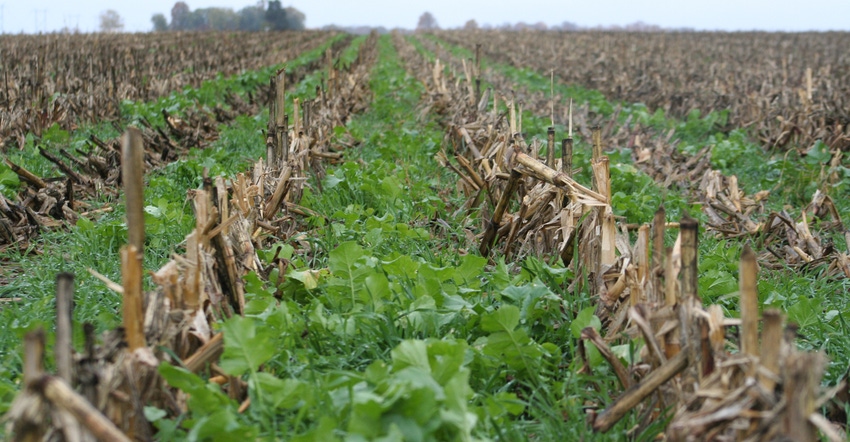May 9, 2020

Farmers truly harvest the sun. Don’t you want to harvest as much sunshine as possible? To do this, you need to have more “solar collectors,” and maximize the plants that are in the field to do the work. Here are five ways to maximize your solar harvest:
1. Improve plant health of cash crops. The most emphasis is placed on maximizing the cash crop, and rightfully so. Make sure you’re doing all you can to improve plant health by addressing various potential yield-limiting factors. But remember that the cash crop is only in the field for about five months, and actively growing and collecting sunshine for about three months.
2. Encourage cover crop growth during the off-season. Cover crops growing early in the spring season are photosynthesizing to exude carbon and activate soil microbes. So, they’re actively functioning and ready to support the cash crop when it’s planted. This is much better than having bare soil, which does nothing for soil health or your bottom line.
3. Plant something productive after wheat. A wheat crop dries down and finishes its life cycle during one of the sunniest months of the year. Think about that barren field in June and July not harvesting any sunlight energy. It’s a missed opportunity. Have something growing underneath the wheat, or plant something immediately following the wheat.
For some, that may be double-crop soybeans, but let’s also consider alternatives such as a high-biomass warm-season cover crop planted in late July or August, or red clover perhaps frost-seeded last spring that takes off once wheat is harvested. The last two options maximize sunlight harvest for that field. A cover crop following wheat harvest can also aid in repairing some fields and help improve overall soil health.
4. Transition from summer crops to a fall crop. Another time to think about maximizing sunshine harvest is when your cash crop is starting to dry down. September and October are great times to get cover crops growing out there to continue your goal of maximizing sunshine harvest. As one crop is stopping its carbon collection, the new crop is building up carbon collection and will continue to feed the soil microbes for as long as possible. Perhaps you can fly on a cover crop into a standing cash crop or have a cover crop custom-applied with a high-clearance applicator.
If you have livestock, you may be able to boost your forage supply by grazing cover crops in late fall in fields with adequate fencing. Check with your local Farm Service Agency office and crop insurance agent before grazing to make sure you are not affecting any program guidelines.
5. Improve cool-season grass pastures. If you have livestock, consider invigorating pastures by interseeding warm-season grasses and legumes, and increasing the amount of solar harvest beyond what’s already happening on these areas. Pastures benefit from fertilization, reseeding and even liming, when needed.
McLain is a state soil health specialist with the Natural Resources Conservation Service. She writes on behalf of the Indiana Soil Conservation Partnership. Tom J. Bechman contributed to this article.
You May Also Like




